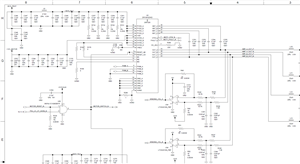We are using 2 DRV8432s to drive 2 stepper motors. We are experiencing random DRV8432 failures resulting in a dead short between PVDD and GND. The output that fails is always random as is the IC.
PVDD = 38.5V
GVDD = 12V
Any ideas what could cause this? It seems to occur on power down, but I have yet to verify this as this failure occurs extremely infrequently.


